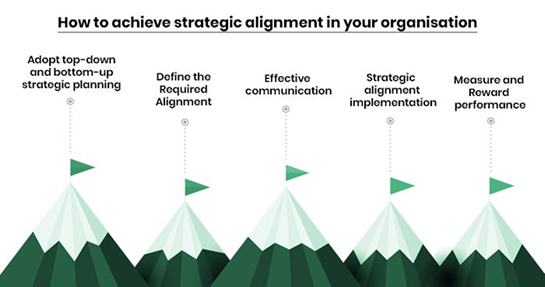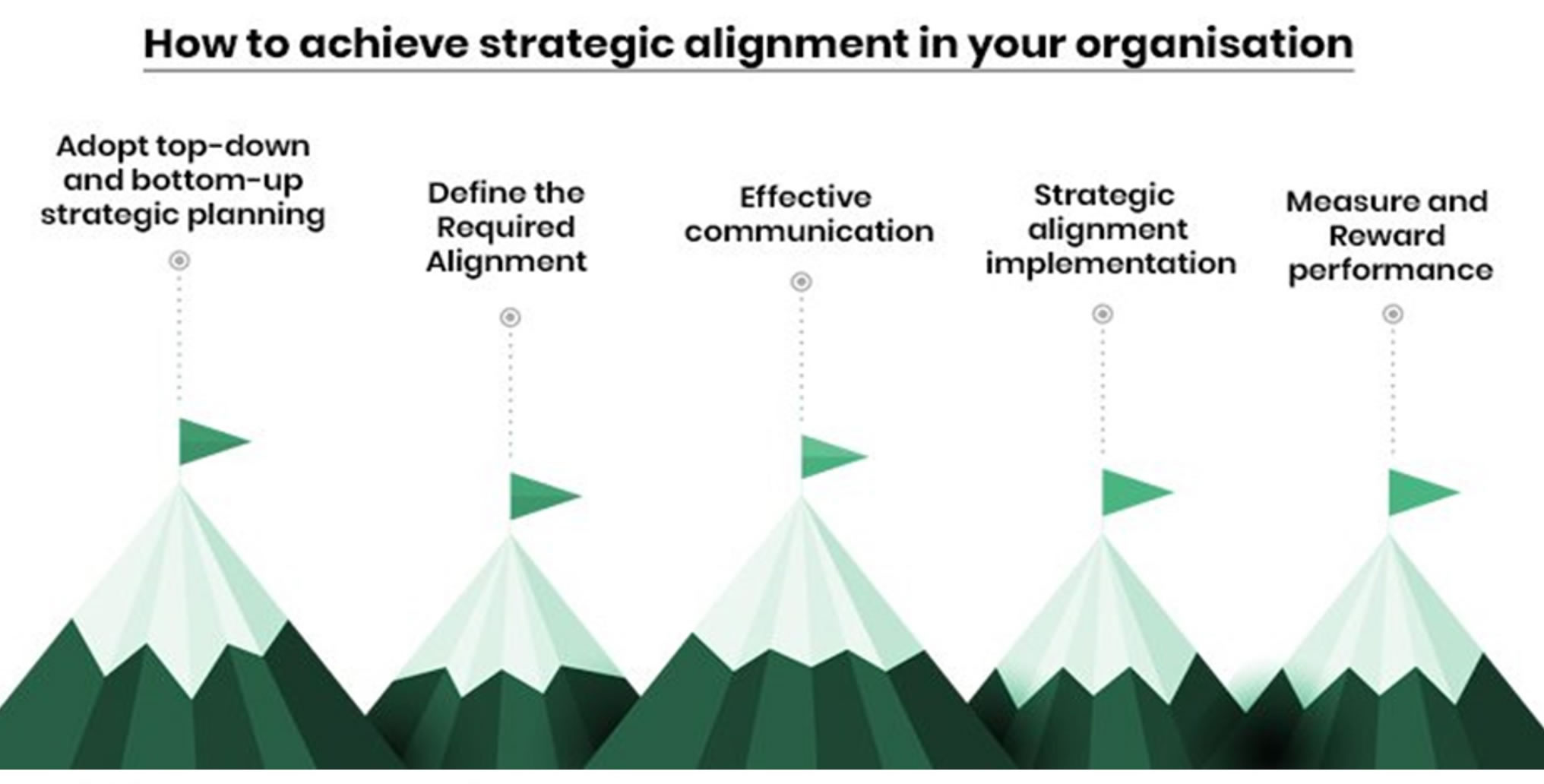Tuesday, February 15, 2021 / 03:00 PM / by Damilola Ishola, Senior Analyst, Phillips Consulting / Header Image Credit: pcl.
Globally, organisations need to keep up with the fast-changing business climate due to the impact of Covid 19, which has led to accelerated technological adoption across industries. They must have active strategies and leverage procedures or systems that support and align with their goals. According to a study by Forbes, about 65 percent of organisations are aware of their planned strategy, but only about 10 per cent successfully execute it. Specifically, many businesses fail to consider strategic alignment as part of their planning process.
The strategic alignment process guarantees that an organisation's structure and resource allocation (and culture) support its strategy. Working with business units, departments, teams, and individuals to tie their strategic efforts to the organisation's overarching strategy goals, objectives, and actions is what strategic alignment is all about.
Strategic alignment may also mean aligning all internal and external stakeholders to accomplish a common organisational strategy. It means that every employee in the company is on the same page and can make decisions, act, and allocate resources and energy per the strategy. The strategic alignment will impact all activities and become ingrained in the company's culture. People become confused about their priorities and make fewer effective decisions when their strategic priorities are not aligned.
It is not enough to have a strategy; aligning your activities with your strategy makes the difference. So, whether it's to adopt a new operating model, take advantage of digital technology, reposition brands, or hire the finest people, strategic alignment is critical.
Why Strategic Alignment Is Important
Organisations must discover ways to navigate and stay ahead of the competition in the global economy, given the dynamic nature of the marketplace. However, organisations must be careful not to lose their business identity to stay up with the varied trends. Strategic alignment can help an organisation balance jumping on trends and strengthening its business identity.
An aligned organisation distinguishes between actions that support the strategy and those that are fundamental. This clear separation ensures that the company's limited resources are directed towards the most effective activities for growth and alignment of functional and business priorities. This, among other things, enables businesses to do more with less, lowering costs while simultaneously improving performance.
Businesses can save time and money by aligning their strategies. Many companies have divisions that are old, obsolete, or unprofitable. They may have two or three divisions with overlapping functions, but they may be more efficient if they are collapsed into a single unit with shared resources. The alignment process allows your company to examine these issues and determine where modifications are needed, allowing for speedier implementation of the organisation's strategic goals.
Clarity is also a result of strategic alignment. It lets employees concentrate on their work instead of determining who is responsible for what and who must be consulted when making decisions. An aligned organisation ties an employee's work to its strategy and conveys it to them. Employees are happier and more productive when they understand how their job contributes to their overall plan.

1. Adopt Top-Down and Bottom-Up Strategic Planning:
Before diving into execution, it is crucial to ensure all decision-makers and stakeholders agree on the strategic plan. Research in the Harvard Business Review shows that 71 per cent of employees in companies with weak execution believe strategic decisions are second-guessed, as opposed to 45 per cent of employees from companies with solid execution. The strategy must speak specifically to the organisational goals and objectives.
2. Define the Required Alignment:
One barrier many companies face in strategy execution is that the organisation's processes, systems, and people do not align with the strategy. After defining your strategy and strategic plan, the next stage is to determine the level of alignment required to achieve your strategic objectives. This entails ensuring that all your plans, systems, and people work toward the same goals. A starting point can be asking how well your organisation supports the achievement of your business strategy.
Strategy: Strategy is the general plan or how an organisation aim to achieve its goals and objectives. The company's operating model, comparative advantage, and value proposition should all be included in the company's strategy. The actions that must be taken to achieve the organisation's goals and objectives should be clearly stated in the strategy.
Systems: Systems here looks at the different set of policies, procedures and processes interconnected or working together in the organisation. The system also shows how decisions are made. To align systems with the overall goal, organisations must recognise the processes they must excel at.
People: Its critical that the executors of the strategy fully comprehend it, believe, and trust it will be carried out uniformly across the organisation. Employees are more satisfied when they feel that their work aligns with the organisation's strategy. The employees and their general capabilities must align with the organisation's strategy. They must also be compensated and appraised according to best practices
3. Effective Communication:
Be prepared to communicate not just once but again and again throughout the realignment process. Communicate how the company intends to achieve its goals and objective through its strategy. Restate the strategy and the need for realignment from time to time. It is also essential to clarify the "why" behind the "what".
4. Strategic Alignment Implementation:
Next, put the plan into action. Check-in with your team regularly about progress and listen to feedback. One effective strategy for monitoring progress is to use daily, weekly, and monthly status reports and check-ins to provide updates, re-establish due dates and milestones, and ensure all teams are aligned.
5. Measure and Reward Performance:
Finally, it is critical to track your progress in terms of aligning work with strategy to understand where you can improve. You can reward satisfactory performance and measure how well the result corresponds with strategy. This entails determining the appropriate measures for assessing alignment and strategy progress and rewarding employees based on those indicators. As employees take the necessary strategic actions and moves to align with strategy and culture, be sure to recognise them in a timely and meaningful way. It is more important to be attentive, flexible, and willing to change or readjust plans as you oversee implementation.
In conclusion, lack of strategic alignment is one of the primary reasons many businesses fail to execute strategy effectively; hence, the importance of strategic alignment cannot be overstated. Organisations are preparing to resume for the new year and therefore setting new goals and strategies. Therefore, this is an excellent time to include strategic alignment in your planning process and budget to aid successful execution in 2022.
Credit:
The post Why Strategic Alignment Is Essential for Your Organisation first appeared in the Phillips Consulting on January 26, 2022.
 Lagos, NG • GMT +1
Lagos, NG • GMT +1











 359 views
359 views





 Sponsored Ad
Sponsored Ad
 Advertise with Us
Advertise with Us









